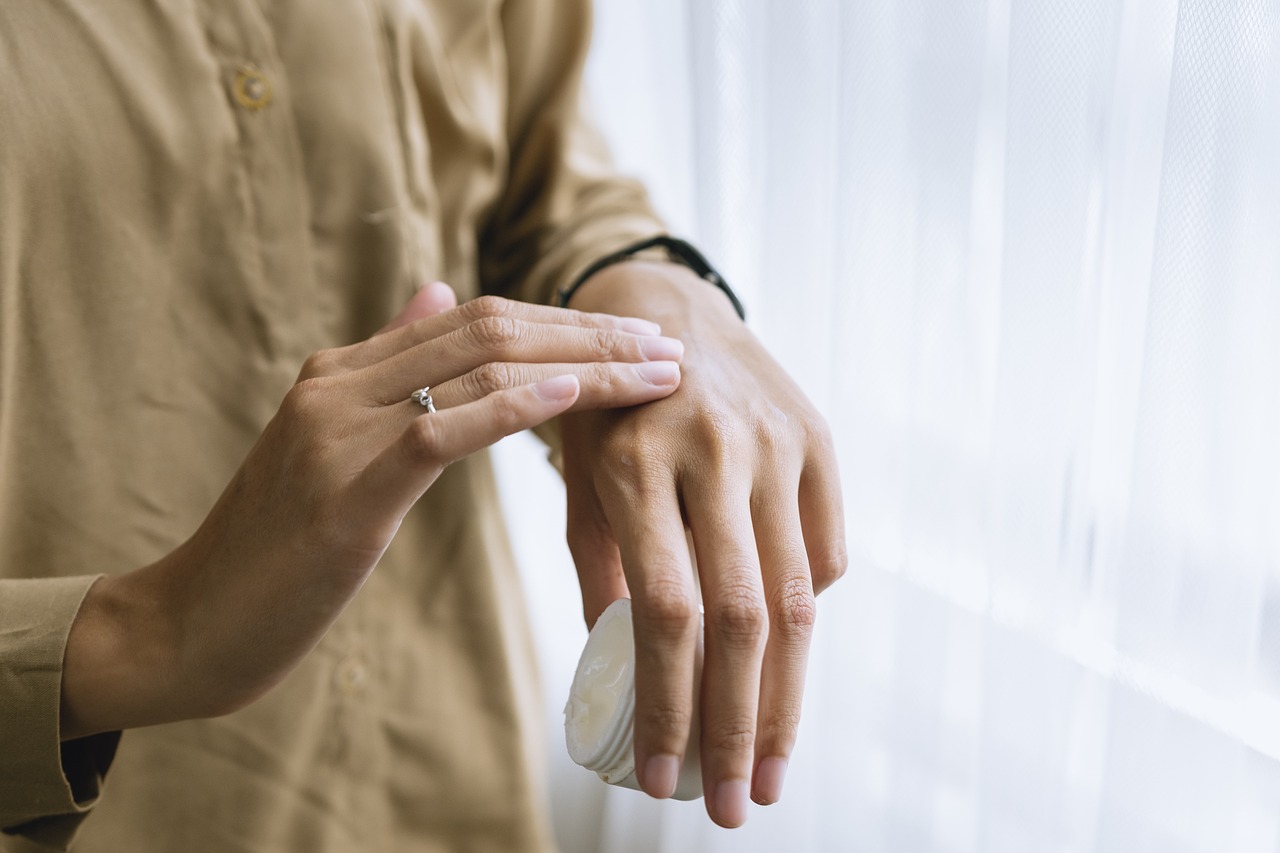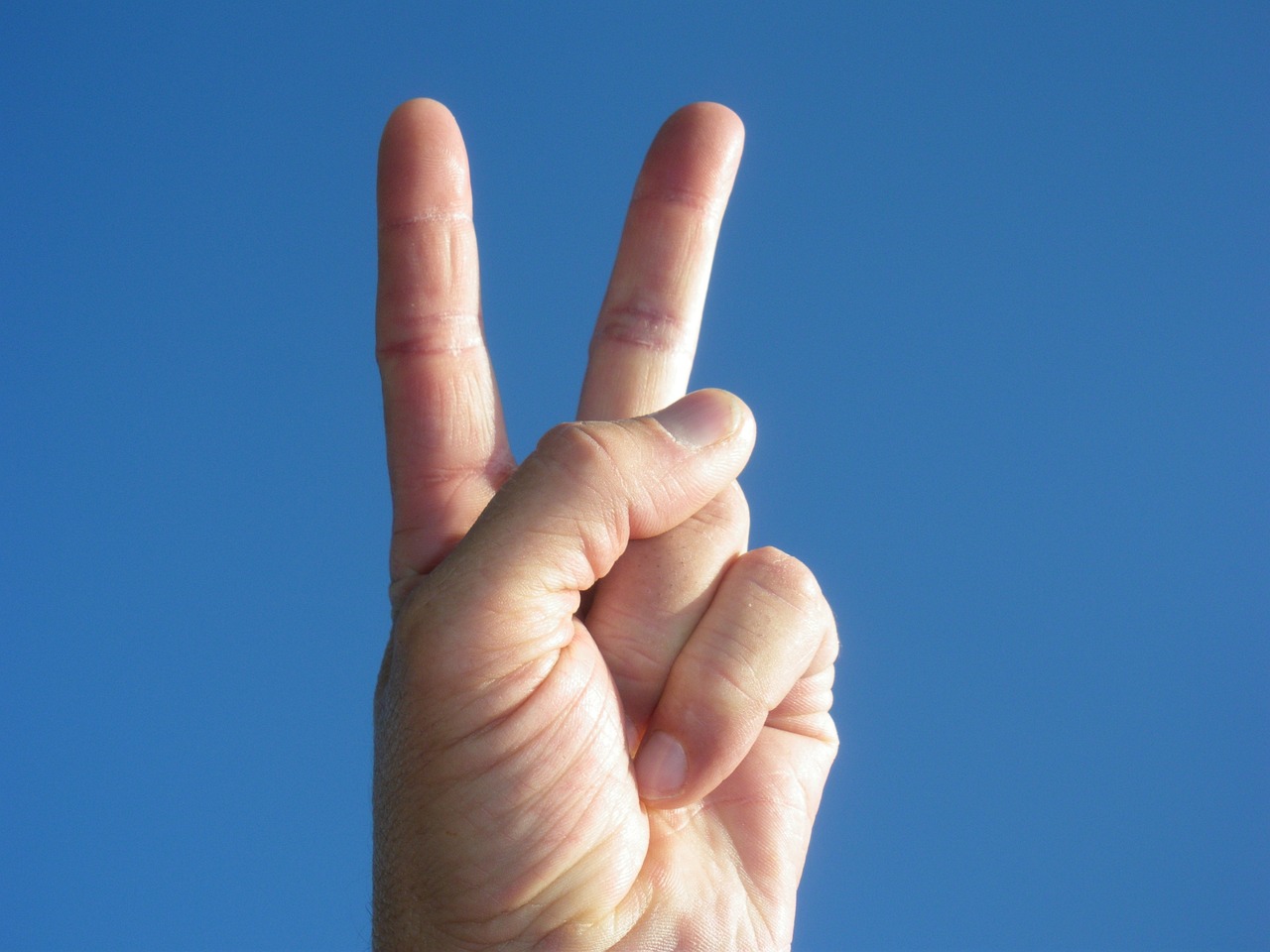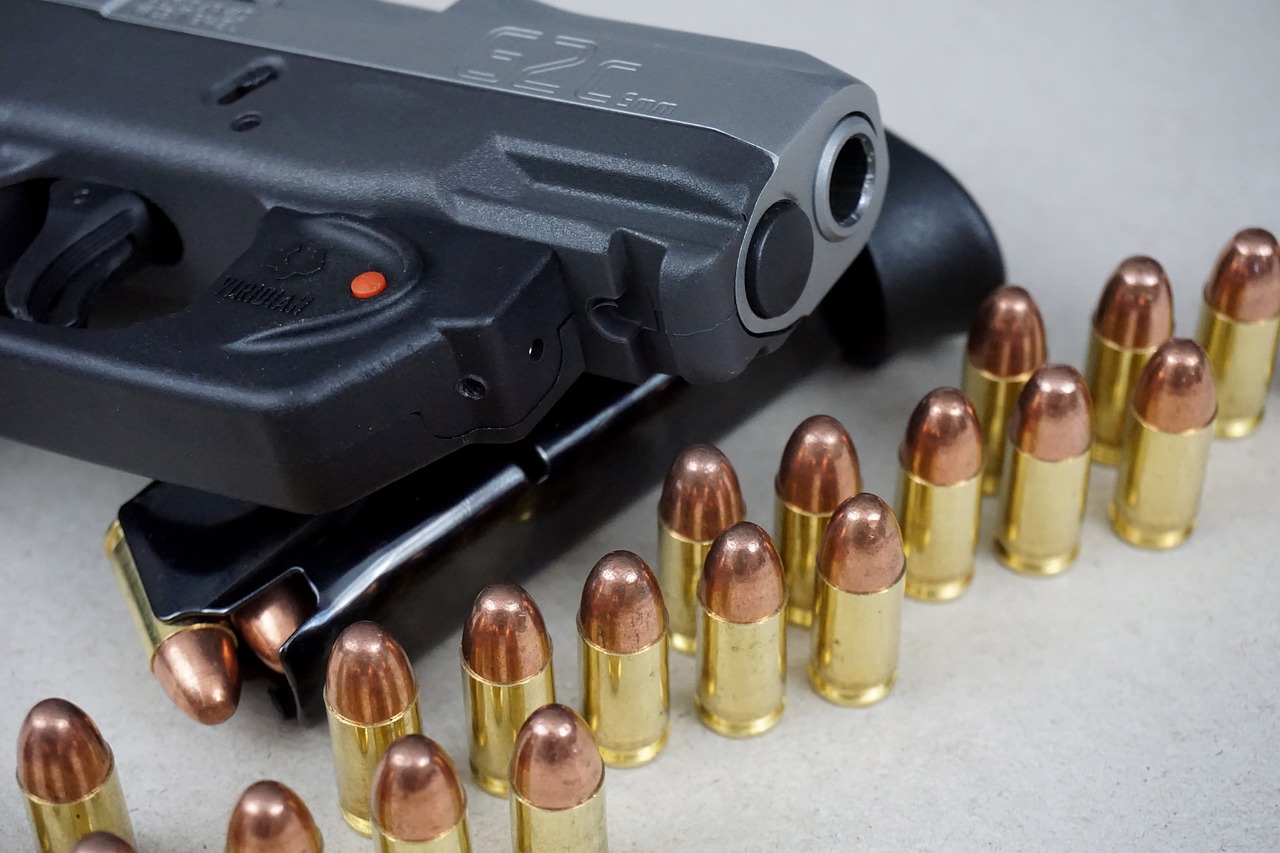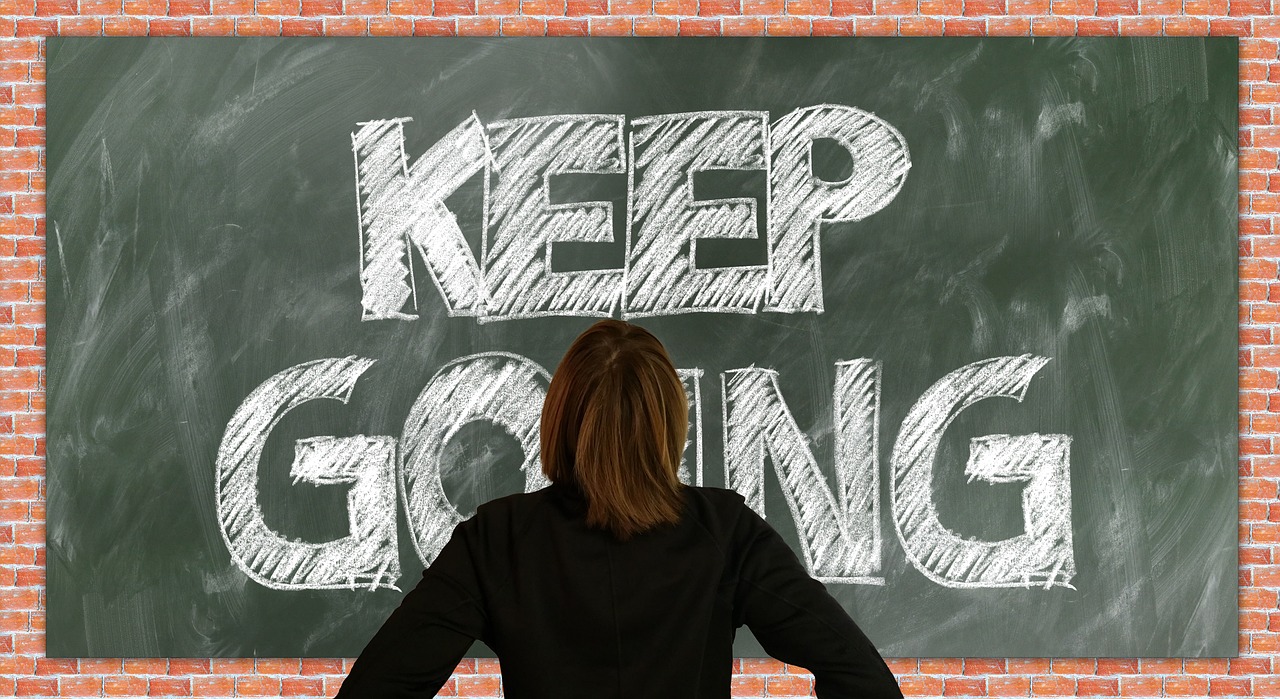How to Choose the Right Self-Defense Class for You?
Choosing the right self-defense class can feel like navigating a maze, especially with so many options available. It’s not just about learning to throw a punch or escape a hold; it's about finding a program that resonates with your personal goals and fits your lifestyle. Whether you want to get fit, boost your self-confidence, or learn practical skills for protection, understanding what you want is the first step in this journey. So, let’s dive deeper into how to make an informed decision that aligns with your objectives and preferences!
Identifying your personal objectives is crucial when choosing a self-defense class. Ask yourself: what do you hope to gain from this experience? Are you looking to improve your physical fitness, build self-confidence, or perhaps learn techniques that could help you in a dangerous situation? These questions are essential as they will guide your selection process. For instance, if your primary goal is to enhance your fitness level, you might gravitate towards classes that incorporate high-energy workouts. On the other hand, if your focus is on practical self-defense skills, classes like Krav Maga or Brazilian Jiu-Jitsu may be more suitable.
There’s a whole world of self-defense classes out there, and each comes with its unique techniques and philosophies. Familiarizing yourself with these types can help you find the right fit for your needs. From traditional martial arts to modern self-defense systems, the options are plentiful. Here’s a brief overview of some popular types:
| Class Type | Description |
|---|---|
| Karate | Focuses on striking techniques, including punches and kicks, emphasizing discipline. |
| Judo | Concentrates on throws and grappling techniques, excellent for learning to use an opponent's weight against them. |
| Krav Maga | A modern self-defense system developed for the Israeli military, focusing on real-world scenarios. |
Different martial arts styles like Karate, Judo, and Krav Maga offer distinct approaches to self-defense. Understanding these styles can aid in selecting a class that aligns with your interests. For example, if you thrive in a structured environment, traditional martial arts like Karate may appeal to you. In contrast, if you prefer a more practical and aggressive approach, Krav Maga might be your best bet.
When it comes to self-defense, there’s a significant difference between traditional and modern techniques. Traditional techniques often focus on discipline, forms, and respect, which can be beneficial for mental growth and self-control. On the flip side, modern techniques prioritize practical application and real-world scenarios, making them incredibly relevant in today’s world. Knowing the difference will help you choose a class that suits your learning style and personal preferences.
Some classes emphasize fitness alongside self-defense skills. If physical conditioning is a priority for you, look for programs that incorporate high-intensity training and cardio elements. These classes not only equip you with self-defense skills but also help you shed calories and build strength. It’s like hitting two birds with one stone!
The instructor's experience and qualifications can significantly impact your learning experience. A well-qualified instructor should have a solid background in self-defense and teaching. Researching their background ensures you receive quality training in a safe environment. Don’t hesitate to ask about their certifications, experience, and teaching style. After all, you want to learn from someone who not only knows their stuff but can also communicate it effectively.
The atmosphere of a self-defense class is vital for your comfort and learning. A supportive and inclusive environment fosters growth and confidence among participants. When you step into a class, ask yourself: does this feel like a community where I can thrive? A welcoming environment can make a world of difference in your learning journey.
Class size can greatly influence your experience. Smaller class sizes often allow for more personalized instruction, which can be beneficial if you’re just starting. You’ll get more individual attention and feedback, making it easier to grasp techniques. On the other hand, larger classes can provide diverse perspectives and a sense of community. Consider what environment best suits your learning preferences.
A strong community can enhance your self-defense journey. Engaging with fellow students and instructors fosters motivation and camaraderie, making the learning process more enjoyable. Look for classes that promote a sense of belonging and support. After all, self-defense is not just about fighting; it’s also about building confidence and forming connections with others.
Q: How do I know if a self-defense class is right for me?
A: Consider your personal goals, the class environment, and the instructor’s qualifications. It’s essential to find a class that aligns with your interests and comfort level.
Q: Can I try a class before committing?
A: Many studios offer trial classes or introductory sessions, allowing you to experience the environment and teaching style before making a commitment.
Q: What should I wear to a self-defense class?
A: Comfortable athletic wear is generally recommended. Some classes may require specific uniforms or gear, so check with the instructor beforehand.

Understanding Your Goals
When it comes to choosing the right self-defense class, the very first thing you need to do is understand your goals. This isn't just about picking a class; it's about aligning your personal objectives with the training you’ll receive. Are you looking to boost your fitness levels? Or perhaps you want to feel more confident walking alone at night? Maybe your aim is to learn how to protect yourself in potentially dangerous situations. Whatever your reasons may be, clearly defining your goals will serve as your compass in this journey.
To help you pinpoint what you really want, consider these questions:
- What specific skills do you wish to acquire?
- Are you looking for a class that focuses more on physical fitness or practical self-defense techniques?
- Do you want to learn in a group setting or prefer one-on-one training?
- Is your primary goal to build confidence, or are you more focused on actual self-defense tactics?
By answering these questions, you’ll gain a clearer picture of what you’re hoping to achieve. For example, if you’re mainly interested in self-defense techniques, you might lean towards classes like Krav Maga or Brazilian Jiu-Jitsu, which are known for their practical applications. On the other hand, if fitness is your priority, then a program that combines high-intensity workouts with self-defense skills might be a better fit.
Moreover, setting your goals isn't just about the immediate benefits. Think long-term! You might start with self-defense for personal safety, but as you progress, you could find yourself drawn into the community and culture of martial arts, leading to a newfound passion. This is why it's essential to keep an open mind while staying true to your initial objectives.
Finally, don't hesitate to revisit and adjust your goals as you advance through your training. Self-defense is a journey, not a destination. As you grow and learn, your objectives may evolve, and that's perfectly okay! The key is to remain engaged and motivated, ensuring that your self-defense class is both a fulfilling and empowering experience.
Q: How do I know if a self-defense class is right for me?
A: Assess your personal goals and preferences. Consider what skills you want to learn and how you prefer to learn them—through group classes or individual training.
Q: Can I switch classes if I find that my first choice isn’t meeting my needs?
A: Absolutely! It’s important to find a class that resonates with you. Don’t hesitate to explore different options until you find the right fit.
Q: Are self-defense classes safe?
A: Yes, most self-defense classes prioritize safety. Instructors typically create a supportive environment and ensure that all participants are comfortable with the techniques being taught.

Types of Self-Defense Classes
When it comes to self-defense, understanding the different types of classes available is essential to finding the right fit for your needs. Each class offers unique techniques and philosophies, so knowing what’s out there can help you make an informed choice. Think of it like shopping for a new outfit; you wouldn’t just grab the first thing you see off the rack, right? You’d want something that fits your style, your body, and your purpose. The same goes for self-defense classes!
Let's dive into some of the most popular types of self-defense classes that you might encounter:
- Martial Arts Styles: This category encompasses various disciplines such as Karate, Judo, and Krav Maga. Each style has its own techniques, philosophies, and training methods. For instance, Karate focuses on striking techniques, while Judo emphasizes grappling and throws. Understanding these distinctions can lead you to a style that resonates with your interests and goals.
- Traditional vs. Modern Techniques: Traditional self-defense often revolves around discipline, respect, and forms, while modern techniques lean towards practical application in real-world scenarios. If you're looking for something that feels relevant and applicable to today's situations, modern techniques might be the way to go. Conversely, if you appreciate the history and culture behind martial arts, traditional classes could be more appealing.
- Fitness-Based Self-Defense: Some self-defense classes double as fitness programs, integrating high-intensity workouts with self-defense skills. If you're someone who wants to get fit while learning how to protect yourself, look for classes that offer cardio elements alongside techniques. It's like hitting two birds with one stone—getting in shape while building your confidence!
Choosing the right type of class is crucial. Think about what you want to achieve. Are you looking for a rigorous workout, or are you more interested in mastering specific techniques? This self-reflection will guide you toward the most suitable option.
Additionally, as you explore different classes, don't hesitate to ask instructors about their teaching methods and philosophies. This can provide insight into what you can expect and help you gauge whether their approach aligns with your learning style.
In summary, the world of self-defense classes is diverse and exciting. From traditional martial arts to modern fitness-based programs, there’s something for everyone. Just remember to keep your personal goals in mind as you navigate through your options. After all, the best class for you is one that not only teaches you valuable skills but also keeps you engaged and motivated!

Martial Arts Styles
When it comes to self-defense, understanding the various is essential. Each style brings its own unique set of techniques and philosophies that can greatly influence your learning experience. For instance, if you’re drawn to striking techniques, you might find yourself leaning towards Karate or Taekwondo, where kicks and punches are the primary focus. On the other hand, if grappling and ground fighting pique your interest, styles like Judo or Brazilian Jiu-Jitsu could be more suitable.
Let’s break down a few popular martial arts styles and what they offer:
| Martial Art | Focus | Key Techniques |
|---|---|---|
| Karate | Striking | Punches, Kicks, Blocks |
| Judo | Grappling | Throws, Holds |
| Krav Maga | Self-Defense | Counter-Attacks, Disarming Techniques |
| Brazilian Jiu-Jitsu | Ground Fighting | Submissions, Guard Positions |
Each of these styles has a different emphasis. For example, Krav Maga is known for its practical approach to self-defense, focusing on real-life scenarios and how to react effectively under pressure. If your goal is to learn how to defend yourself in a street fight, this might be the style for you. Conversely, if you’re looking for a more traditional approach that emphasizes discipline and respect, Karate could be a better fit.
Moreover, consider your personal interests and fitness level. Some styles, like Taekwondo, incorporate a lot of high-energy kicking techniques that can also serve as a great workout. Others might focus more on technique and strategy, which can be equally rewarding but might not provide the same level of physical exertion.
Ultimately, the right martial arts style for you will resonate with your personal goals. Whether you want to build self-confidence, improve your fitness, or learn practical self-defense skills, understanding these styles will help you make an informed choice. So, take the time to explore the different martial arts available, and don't hesitate to try out a few classes to see what feels right!

Traditional vs. Modern Techniques
When it comes to self-defense, the choice between traditional and modern techniques can feel a bit like choosing between a classic novel and the latest bestseller. Both have their merits, but they serve different purposes and cater to different learning styles. Traditional techniques often emphasize the roots of martial arts, focusing on discipline, forms, and a deep understanding of the philosophy behind the movements. Think of it as learning the art of storytelling, where every move tells a part of a larger tale. This approach can be incredibly enriching, providing students with a sense of history and connection to the martial arts community.
On the other hand, modern techniques are like the fast-paced, action-packed thrillers that keep you on the edge of your seat. They prioritize practical application and real-world scenarios, aiming to equip students with skills that can be immediately utilized in a self-defense situation. If you've ever felt the adrenaline rush of a high-stakes movie, you'll appreciate the urgency and relevance of these techniques. They often incorporate elements from various disciplines, creating a well-rounded approach that is adaptable to different situations.
Here are some key differences to consider when weighing your options:
| Aspect | Traditional Techniques | Modern Techniques |
|---|---|---|
| Focus | Discipline and forms | Practical application |
| Training Style | Structured and formal | Dynamic and scenario-based |
| Philosophy | Rich historical context | Adaptable to contemporary challenges |
| Physical Conditioning | Varies, often less emphasis | High-intensity training included |
Ultimately, the choice between traditional and modern techniques boils down to your personal preferences and goals. If you’re looking for a deep connection to martial arts history and a structured learning path, traditional techniques might be your jam. However, if you thrive in an environment that prioritizes practical skills and real-world applications, modern techniques could be the perfect fit. It’s like choosing between a slow-cooked meal that takes time to prepare and a quick, easy dish that hits the spot—both can be satisfying, but they cater to different appetites.

Fitness-Based Self-Defense
When it comes to self-defense, many people think of combat techniques and strategies, but there's another vital aspect that should not be overlooked: fitness. Fitness-based self-defense classes combine physical conditioning with self-defense skills, making them an excellent choice for those who want to improve both their strength and their ability to protect themselves. Imagine this: you're not only learning how to defend against an attacker but also burning calories and building muscle at the same time. It's like hitting two birds with one stone!
These classes typically incorporate high-intensity training and cardio elements, which can significantly enhance your overall fitness level. For instance, you might find yourself engaging in activities like kickboxing, circuit training, or even obstacle courses designed to simulate real-life scenarios. This type of training not only prepares you physically but also boosts your confidence, which is a crucial component of self-defense. After all, feeling fit and strong can make all the difference in how you respond in a challenging situation.
Moreover, fitness-based self-defense classes often focus on functional movements that mimic the actions you would take in a real-life self-defense situation. This practical approach means you're not just learning techniques in a vacuum; you're training your body to react instinctively. It's like training for a marathon—you don't just run; you build endurance, speed, and strength, all of which can be essential in a self-defense scenario.
Here’s a quick overview of some common elements you might find in a fitness-based self-defense class:
- Cardio Workouts: High-energy routines that get your heart pumping.
- Strength Training: Exercises that build muscle and improve your physical power.
- Technique Drills: Practicing self-defense moves in a controlled environment.
- Real-Life Scenarios: Simulations that prepare you for actual confrontations.
So, if you're considering a self-defense class, think about what you want to achieve. If fitness is a priority, look for programs that emphasize both physical conditioning and self-defense techniques. You’ll find that the more you train, the more capable and empowered you feel, which is the ultimate goal of any self-defense training.
1. What should I wear to a fitness-based self-defense class?
Most classes recommend wearing comfortable athletic clothing and supportive shoes. You want to ensure you can move freely while practicing various techniques.
2. Do I need prior experience in martial arts?
No prior experience is usually necessary. Many fitness-based self-defense classes cater to beginners and gradually build up your skills.
3. How often should I attend classes?
For optimal results, try to attend classes at least two to three times a week. Consistency is key to improving both your fitness and self-defense skills.
4. Can I take a class if I have physical limitations?
Absolutely! Many instructors can modify exercises to accommodate different fitness levels and physical limitations, ensuring everyone can participate safely.

Instructor Qualifications
When it comes to selecting a self-defense class, one of the most critical factors to consider is the qualifications of the instructor. The instructor can make or break your experience; their expertise and teaching style can significantly impact your learning process. You wouldn’t want to learn how to defend yourself from someone who lacks proper training, right? So, what should you look for in an instructor?
First and foremost, it's essential to verify their credentials. Instructors should ideally hold certifications from recognized organizations in their respective martial arts or self-defense disciplines. These certifications not only validate their skills but also ensure they adhere to a certain standard of teaching. For instance, an instructor with a black belt in Karate or a certified Krav Maga instructor has undergone rigorous training and testing to earn their status. This background provides a solid foundation in self-defense techniques.
Experience is another crucial aspect. An instructor who has been teaching for several years will have a wealth of knowledge and practical insights to share. They will likely have encountered various scenarios and learned how to adapt their teaching methods to suit different learning styles. This adaptability can be incredibly beneficial, especially for beginners who might feel overwhelmed. Ask potential instructors about their teaching history—how long they've been teaching, the types of classes they've conducted, and their overall experience in self-defense. This can give you a clearer picture of what to expect.
Moreover, it's vital to consider their teaching philosophy. Some instructors focus heavily on competition and sparring, while others emphasize practical self-defense applications for real-world situations. Depending on your goals, you may prefer one approach over the other. For example, if you're looking to build confidence and learn how to handle potentially dangerous situations, an instructor who prioritizes practical techniques might be more suitable for you. Don't hesitate to ask about their teaching methods during your initial consultation or trial class.
Finally, a great instructor should also foster a supportive learning environment. They should be approachable and willing to answer questions, ensuring that every student feels comfortable and valued. A good instructor recognizes that each student has unique strengths and weaknesses, and they should be able to tailor their instruction accordingly. You can often gauge this during your first class. Are they attentive to each student? Do they provide constructive feedback? These factors can significantly contribute to your overall learning experience.
In summary, the right instructor can elevate your self-defense training from a simple class to a transformative experience. When choosing a self-defense class, take the time to research and evaluate the qualifications of the instructors. Their credentials, experience, teaching philosophy, and ability to create a supportive environment are all essential elements that will enhance your journey in mastering self-defense.
- What qualifications should I look for in a self-defense instructor? Look for instructors with recognized certifications, significant teaching experience, and a supportive teaching style.
- How can I assess an instructor's teaching style? Attend a trial class or ask for recommendations from current students to get a feel for their teaching approach.
- Is it important for an instructor to have real-world experience? Yes, instructors with real-world experience can provide practical insights and techniques that are applicable outside the classroom.
- What if I prefer a specific martial art style? Research instructors who specialize in that style, and ensure they have the necessary qualifications and experience.

Class Environment and Culture
When it comes to choosing the right self-defense class, the play a pivotal role in your overall experience. Imagine stepping into a space where you feel welcomed and supported—this is essential for your growth and confidence as you learn new skills. A positive atmosphere not only enhances your learning but also encourages you to push your limits and challenge yourself. Think of it like joining a new team; you want to feel like you belong, and that your efforts are recognized and appreciated.
One of the first aspects to consider is the class size. Smaller classes often provide a more intimate setting, allowing for personalized instruction. This means that you can receive tailored feedback and guidance from your instructor, which can significantly enhance your learning experience. On the other hand, larger classes can offer a vibrant mix of perspectives and experiences, which can be incredibly enriching. You’ll get to see various techniques and styles, and you might even make some new friends along the way! Ultimately, it’s about finding the balance that suits your learning preferences.
Another vital element is the community and support within the class. A strong, cohesive community can transform your self-defense journey into an enjoyable and motivating experience. Engaging with fellow students and instructors fosters a sense of camaraderie that can make even the most challenging workouts feel like a breeze. When you’re surrounded by like-minded individuals who share similar goals, it creates an atmosphere of encouragement and accountability. You’re not just learning self-defense; you’re building relationships and creating memories.
It’s also essential to observe the instructor’s approach to teaching. A good instructor will cultivate a culture of respect and inclusivity, where everyone feels comfortable to express themselves and ask questions. They should promote a safe learning environment, where mistakes are viewed as opportunities for growth rather than failures. This kind of environment allows you to experiment with techniques and develop your skills without fear of judgment. After all, self-defense is not just about physical techniques; it’s about building confidence and resilience.
In conclusion, when exploring self-defense classes, never underestimate the importance of the . It can make all the difference in your learning journey. Whether you thrive in a smaller, more intimate setting or prefer the energy of a larger group, be sure to choose a class that resonates with your personal style. Remember, you are not just signing up for a class; you are joining a community that will support you in your quest for knowledge, strength, and confidence.
- What should I wear to a self-defense class? It's best to wear comfortable athletic clothing and supportive shoes that allow for movement.
- How long does a typical self-defense class last? Most classes last between 60 to 90 minutes, depending on the program.
- Do I need previous experience to join a self-defense class? No, many classes cater to beginners, so you can start your journey regardless of your skill level.
- Is self-defense training safe? Yes, self-defense classes prioritize safety, and instructors are trained to create a secure environment for all participants.

Class Size
When it comes to choosing a self-defense class, is a crucial factor that can significantly impact your learning experience. Imagine stepping into a room filled with eager learners, each one vying for attention and instruction. In smaller classes, you often find yourself receiving more personalized attention from the instructor. This means that you can ask questions, receive feedback, and practice techniques without feeling rushed or overlooked. It’s like having a coach by your side, guiding you every step of the way.
On the other hand, larger classes can offer a different kind of experience. They often come with a diverse group of participants, which can enhance the learning process through varied perspectives and experiences. You might find that learning alongside a wide range of individuals can expose you to different techniques and styles, almost like a melting pot of self-defense knowledge. However, in these settings, the instructor's attention may be divided, and you might miss out on the one-on-one guidance that smaller classes provide.
Consider what type of environment you thrive in. If you prefer a more intimate atmosphere where you can build rapport with your instructor and fellow students, a smaller class might be your best bet. Conversely, if you enjoy the energy of a bustling group and don’t mind sharing the instructor's attention, then a larger class could be more your style. It's essential to weigh the pros and cons of each:
| Class Size | Pros | Cons |
|---|---|---|
| Small Classes |
|
|
| Large Classes |
|
|
Ultimately, the right class size for you depends on your personal learning style and comfort level. Don’t hesitate to visit a few classes to see how the size affects your experience. Remember, it’s not just about learning self-defense techniques; it’s about finding a space where you feel empowered and supported in your journey.
Q: How do I determine the ideal class size for my self-defense training?
A: Consider your personal learning style. If you thrive on individual feedback and attention, look for smaller classes. If you enjoy learning from a diverse group, larger classes might suit you.
Q: Can I switch classes if I find the size isn't right for me?
A: Absolutely! Many studios allow you to try different classes to find the perfect fit. Don’t hesitate to explore your options.
Q: Are larger classes less effective for learning self-defense?
A: Not necessarily. While smaller classes offer more personalized attention, larger classes can provide valuable insights and experiences from a broader group of participants.

Community and Support
When it comes to choosing the right self-defense class, the you find within that environment can make all the difference. Imagine stepping into a class where everyone knows your name, encourages your progress, and celebrates your victories—big or small. This kind of supportive atmosphere not only makes learning more enjoyable but also fosters a sense of belonging that can be incredibly motivating. After all, self-defense is not just about learning techniques; it’s about building confidence and resilience, and a strong community can help you achieve that.
Being part of a community means you have access to a network of individuals who share similar goals and interests. You can exchange tips, share experiences, and even form friendships that extend beyond the dojo or training space. Think of it like a team sport—when everyone is working towards a common goal, the energy is contagious! You’re not just training alone; you’re part of a collective journey where everyone lifts each other up.
Moreover, a supportive community can provide you with a safety net during challenging moments. If you’re struggling with a particular technique or feeling overwhelmed, having fellow students and instructors who are willing to help can be invaluable. They can offer guidance, share their own struggles, and remind you that you’re not alone in this journey. This camaraderie can be a game-changer, especially for beginners who might feel intimidated at first.
Another aspect to consider when evaluating the community aspect of a self-defense class is the instructor's approach. A good instructor not only teaches techniques but also fosters a culture of respect and support among students. They should encourage collaboration, where experienced students help newcomers, creating an environment where everyone feels valued. You might want to ask potential instructors about their philosophy on community and support during your initial inquiry. This way, you can gauge whether their values align with your expectations.
Finally, participating in group activities or events outside of regular classes can further strengthen the bonds within the community. Many self-defense schools organize workshops, seminars, or social events that allow students to connect on a deeper level. These interactions can enhance your learning experience and make it more enjoyable. So, when you’re on the hunt for the right self-defense class, remember to look beyond the techniques and focus on the community that surrounds it. After all, a supportive environment can turn your self-defense journey into a fulfilling adventure!
- What should I look for in a self-defense class?
Consider your personal goals, the types of classes offered, instructor qualifications, and the community atmosphere. - How important is the instructor's experience?
The instructor's background is crucial as it directly affects the quality of training you receive. - Can I try a class before committing?
Many studios offer trial classes or introductory sessions, so you can get a feel for the environment and teaching style. - What if I’m a beginner?
Look for classes that cater specifically to beginners, where instructors are patient and understanding of your learning pace. - Is it safe to practice self-defense?
Yes, self-defense classes prioritize safety and teach techniques in a controlled environment.
Frequently Asked Questions
- What should I consider when setting my self-defense goals?
It's essential to reflect on what you want to achieve from your self-defense training. Are you looking to boost your fitness, build self-confidence, or learn practical techniques for personal safety? Your goals will help narrow down the type of class that fits your needs.
- What types of self-defense classes are available?
There are several types of self-defense classes, including traditional martial arts like Karate and Judo, modern approaches like Krav Maga, and fitness-based self-defense programs. Each offers unique techniques and philosophies, so exploring these options will help you find the best fit.
- How do I know if an instructor is qualified?
Researching an instructor's background is key. Look for their training experience, certifications, and teaching history. A qualified instructor should have a solid understanding of self-defense principles and a commitment to creating a safe learning environment.
- What kind of class environment should I look for?
A supportive and inclusive class atmosphere is crucial for effective learning. Pay attention to how instructors interact with students and the overall vibe of the class. A positive environment can significantly enhance your self-defense journey.
- Is class size important in self-defense training?
Yes! Smaller class sizes often allow for more personalized instruction, which can be beneficial for your learning experience. However, larger classes can provide diverse perspectives and camaraderie. Think about what environment makes you feel most comfortable.
- How can I build a sense of community in my self-defense class?
Engaging with fellow students and instructors is a great way to foster a sense of community. Participate in group activities, support each other during training, and attend events outside of class to strengthen those bonds and enhance your experience.



















